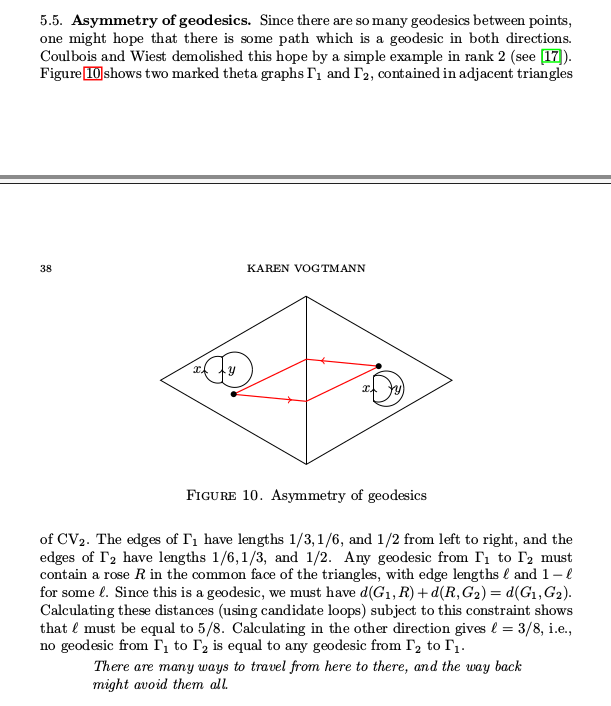To talk about geodesics, you need a notion of distance. For outer space, something strange happens: there is a natural notion of distance (called the "Lipshitz metric"), but it is not symmetric. In other words, there exist points $x$ and $y$ in Outer space such that $d(x,y)$ and $d(y,x)$ are different! Nonetheless, one can still talk about geodesics.
For an introduction to this circle of ideas, I recommend Bestvina's Park City notes:
Bestvina, Mladen,
Geometry of outer space. Geometric group theory, 173–206,
IAS/Park City Math. Ser., 21, Amer. Math. Soc., Providence, RI, 2014.
The whole set of notes is useful, but Lecture 3 is where the distance function is defined.

